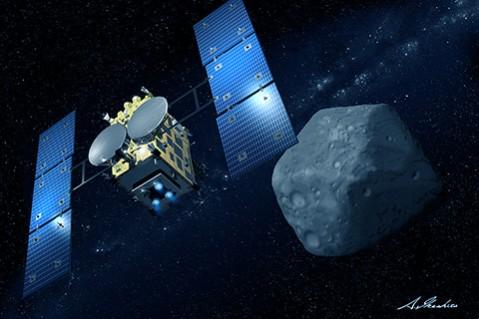
Yes, it is possible that someday some gigantic asteroid may hit our home planet and damage the lives as we know it. The American space agency NASA is busy taking the threats of the smaller space objects near the Earth more seriously than the distant ones.
As per a NASA report of 2016, which the organization published this month, the American space agency is keen to develop a strategy in collaboration with several federal agencies to determine the position of the asteroids that may pose threat to our home planet and track them. The US Congress had given this responsibility of hunting down the potentially perilous near-Earth objects (NEOs) to NASA under a law that was passed in 2005.
"If a real threat does arise, we are prepared to pull together the information about what options might work and provide that information to decision-makers," NASA's planetary defense officer, Lindley Johnson stated during a press briefing. Even japan has sent its spacecraft Hayabusa 2 that has detected an asteroid recently.

Now, the space agency is more focused on searching the asteroids, which are larger than 450 feet across and also known as the "city-killers." Space rocks of this size are quite difficult to spot but they may hit the Earth hard.
Once they collide with the Earth or even just enter our atmosphere, they might explode and generate energy amounting to the same quantity that 60 megatons-worth of TNTs. These asteroids are far more powerful than the strongest nuclear weapon that the earthlings have ever detonated.
According to the researchers, more than a million of these "city-killers" are threatening our planet from a place in space, which we are not being able to see entirely. Also, we have been able to discover only a third of them.
Scientists have proposed to find these asteroids, using the Near-Earth Object Camera or NEOCam, which is essentially a space-based telescope, with an infrared camera. NASA had committed last year that it will fund this NEOCam, but currently, its future prospects look grim because the technology is still in an "extended study phase," reported SpaceNews.
With or without the NEOCam we have to find these asteroids before they find their way to Earth.

















